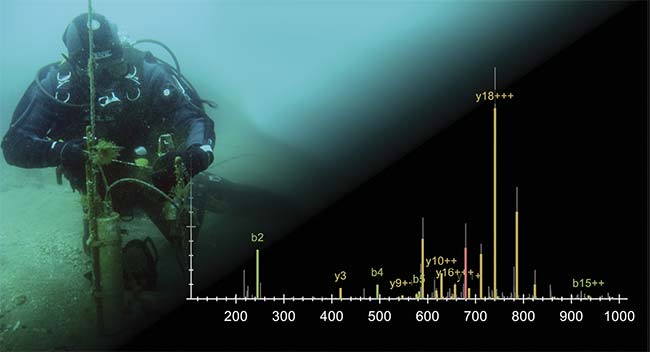Human swimmers may need a waterproof watch to tell time while bathing in the ocean, but certain marine species whose internal clocks are regulated by light do not.
With this circadian regulation in mind, researchers at the University of Vienna decided to measure the effects of changing light on the movements and other activities of a worm that lives in coastal waters in temperate zones of the Bay of Naples, Italy. Over time, the researchers discovered that UV light affected the worms differently than intensities of other wavelengths. Put another way, internal clocks adjust themselves according to the kinds of rays that shine on them.
“This worm can be very well grown in the lab. As a matter of fact, it has been used as a model system since the 1950s,” said professor Kristin Tessmar-Raible, who runs Max Perutz Labs at the university, where the experiment was conducted. “It is very interesting for various research directions, including evolution, marine ecology, chronobiology, developmental biology and regeneration, neurobiology, and behavior.”
The team focused their research on characteristics of the Platynereis dumerilli (marine bristle worm). They found that a decreased intensity of UV light — in the 370- to 430-nm range — shined over an extended period of time, produced a reduction in worm movement. They traced this phenomenon to c-opsin1, a light-sensitive protein that triggers a reaction in the brain of the worm and regulates neuropeptides, or proteins that enable communication between neurons.
The researchers used radiometers to take measurements of light intensity at various sea depths — 4, 5, and 10 m — over the course of a year. They then translated the results into an experiment in their laboratory. They shined LED lights on plastic boxes filled with seawater and found that when they used filters to reduce the UV light for a specific period of time, the worms moved substantially less than when under bright light.
UV-sensitive opsins are commonly found in many animals, including humans. Tessmar-Raible said that the behavior of marine life has a wide impact on the entire ocean ecosystem. Since any laboratory experiment, no matter how sophisticated, cannot perfectly match the experiences of animals in the wild, there is still much to uncover about how internal biological rhythms are set and how the optical “clock hands” work in the examined creatures’ physiology.
“We like to think of UVA light as something that we should be protected from, but in these marine worms it clearly has a biological function,” Tessmar-Raible said.
The researchers have no plans to press the snooze alarm on their research, either.
“We are particularly interested in the worms’ inner calendar that synchronizes the timing of reproduction across the population,” Tessmar-Raible said. “The stimulus that sets this calendar is moonlight. Our major interests at the moment are to understand how moonlight does this and how the different timing systems function jointly to control animal behavior and physiology.”
The potential cause-and-effect relationship between UV light and animal behavior is of interest to scientists and other observers of the environment, no matter what time of day it is.

Researcher Enrique Arboleda collects light measurements underwater. Mass spectroscopy measurements that focused on the heads of marine bristle worms reveal the levels of neuropeptides — proteins that enable communication between neurons — that are found under various lighting conditions.